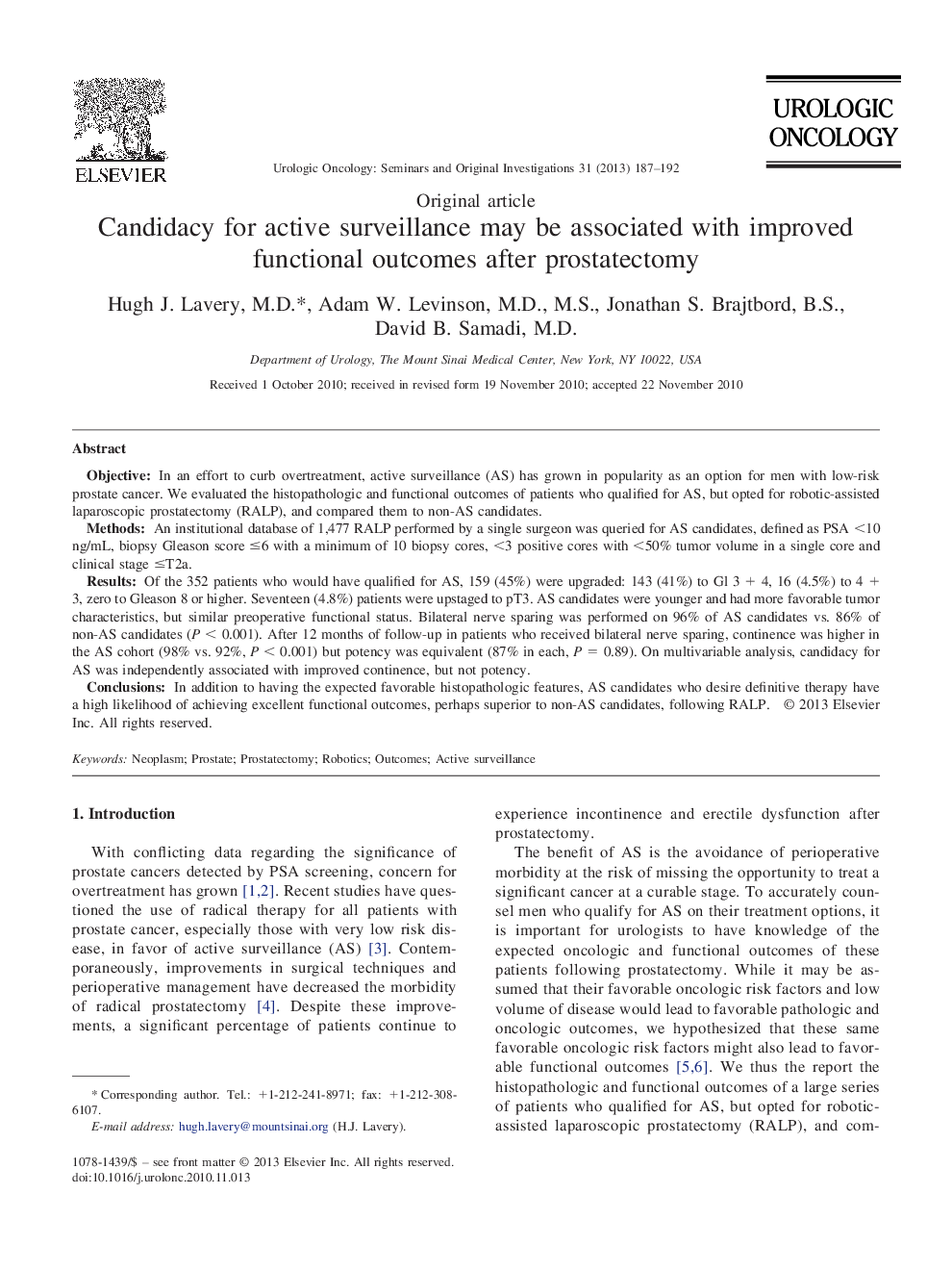| Article ID | Journal | Published Year | Pages | File Type |
|---|---|---|---|---|
| 4000124 | Urologic Oncology: Seminars and Original Investigations | 2013 | 6 Pages |
ObjectiveIn an effort to curb overtreatment, active surveillance (AS) has grown in popularity as an option for men with low-risk prostate cancer. We evaluated the histopathologic and functional outcomes of patients who qualified for AS, but opted for robotic-assisted laparoscopic prostatectomy (RALP), and compared them to non-AS candidates.MethodsAn institutional database of 1,477 RALP performed by a single surgeon was queried for AS candidates, defined as PSA <10 ng/mL, biopsy Gleason score ≤6 with a minimum of 10 biopsy cores, <3 positive cores with <50% tumor volume in a single core and clinical stage ≤T2a.ResultsOf the 352 patients who would have qualified for AS, 159 (45%) were upgraded: 143 (41%) to Gl 3 + 4, 16 (4.5%) to 4 + 3, zero to Gleason 8 or higher. Seventeen (4.8%) patients were upstaged to pT3. AS candidates were younger and had more favorable tumor characteristics, but similar preoperative functional status. Bilateral nerve sparing was performed on 96% of AS candidates vs. 86% of non-AS candidates (P < 0.001). After 12 months of follow-up in patients who received bilateral nerve sparing, continence was higher in the AS cohort (98% vs. 92%, P < 0.001) but potency was equivalent (87% in each, P = 0.89). On multivariable analysis, candidacy for AS was independently associated with improved continence, but not potency.ConclusionsIn addition to having the expected favorable histopathologic features, AS candidates who desire definitive therapy have a high likelihood of achieving excellent functional outcomes, perhaps superior to non-AS candidates, following RALP.
